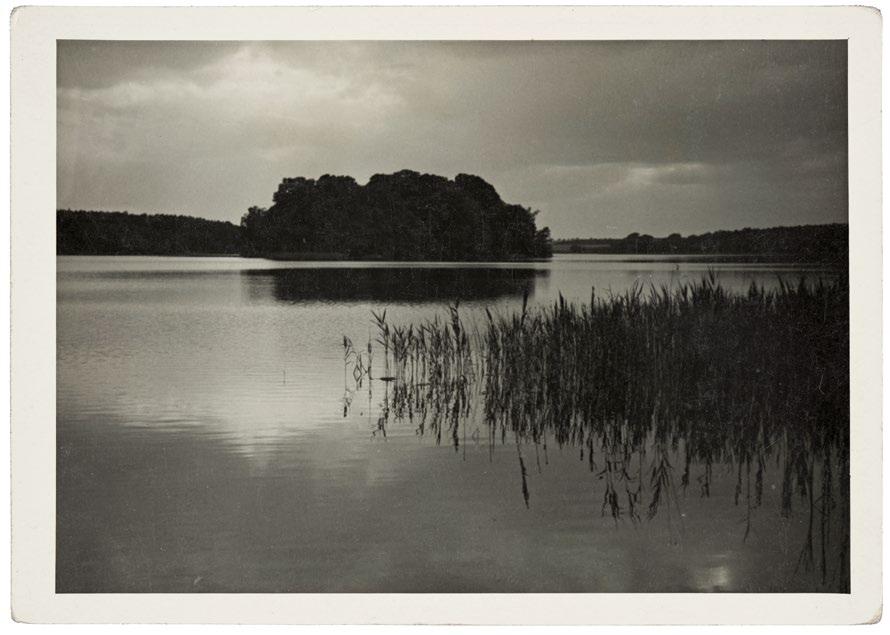
4 minute read
Landscape cultivation’ in Poznań. Adam Wodziczko (1887-1948
Adam Wodziczko (1887–1948)
Advertisement
Michał Kępski TRAKT CTC
Landscape architecture – as the ability to arrange outdoor areas with the use of plants, street furniture, landforms and water – is a field known to people from the turn of the 19th and 20th century. It was born out of the centuries-old tradition of gardening. The discipline objectified nature, reducing its value to a purely aesthetic function. A different approach to shaping everything that surrounds human beings was proposed by the Poznań biologist and botanist Adam Wodziczko.
Wodziczko, who coined and popularized terms such as ‘physiotactics’, ‘landscape cultivation’ and ‘steppe-formation in Wielkopolska’, was born in Słotwina – a little town which was under the Austrian authority during the Partition. He received education and began his first research and didactic work at the Jagiellonian University before the First World War. In 1919, after the war ended, he moved to Poznań where his academic career and social activity was in full blossom. After five years he became the head of the University of Poznań’s Botanic Garden (he held this position till the end of his life; one of the things he did was to rebuild the Garden after it was destroyed during the Second World War). In 1925 he was appointed professor at the Faculty of Mathematics and Natural Sciences at the University of Poznań, and in 1938 he created the Cross-Faculty Seminar on Biocenology and Nature Conservation. It was one of his most important projects. The Seminar’s regular meetings were an opportunity to discuss the subjects of ecology as well as landscape and nature conservation. This was a truly trailblazing initiative. After the Second World War, already in 1945, the first independent Department of Nature Conservation and Landscape Cultivation in Poland was established at the Faculty of General Botany at the University of Poznań. Wodziczko’s research and didactic work was complemented by his engagement in the work for the common good. As a member of many societies and institutions (for example the Poznań Society for the Advancement of Arts and Sciences, the Nature Conservation League, the Polish Botanic Society and the International Nomenclature Commission) he was actively engaged in the work on protecting the whole natural system. He participated in the work on establishing the national parks including the Tatra National Park, the Pieniny National Park and the Babia Góra National Park. He was particularly interested in and amazed by the Wielkopolska region. However, despite his great involvement in the project, he did not live to see the establishment of the National Park of Wielkopolska which took place in 1957 after his death.
Already in the 1920s Wodziczko noticed the problem of excessive human impact on the natural environment and informed the public about it. He drew the society’s attention to the negative consequences of such practices as deforestation, wetland drainage, regulation of the flow of rivers and streams, and removing natural elements from the areas intended for land cultivation. He created his own idea of how landscape should be managed:
“Just like maintaining land efficiency is called land cultivation, so the activities directed towards the landscape as a whole which aim to maintain its value are called landscape cultivation. […] Taking care of the landscape requires ensuring that it is kept in good health, which means maintaining and enhancing the productive potential of land and water. We have to maintain healthy water circulation in the landscape through the natural water resource management, fight
Glacial lakes in the area of today’s National Park of Wielkopolska, photo: M. Orłowicz, 1935, public domain, source: The National Library of Poland
erosion, ‘farmer’s hidden whip’, maintain and increase the soil’s hummus, plant copses for birds and replant trees in the middle of fields because this is how we can protect the landscape from decomposition, maintain its biological balance and create new national and economic assets […] Taking care of the landscape has nothing to do with ‘beautifying the landscape’, ‘forest aesthetics’ and other similar artificial beautifying treatments […] We have to manage the nature’s resources well, keeping the landscape as a whole in mind and not limiting this management to the use of a piece of land. This is the condition we have to meet in order to take care of the landscape effectively.”
Adam Wodziczko created the theoretical background for the ecological approach to the environment protection. He was not interested in preserving only some chosen natural elements such as particular animal and plant species or inanimate nature. In his work, he highlighted the importance of noticing the value of the landscape as a collection of various elements. Landscape cultivation which he proposed, was supposed to be such management of the land that it would prevent the balance between human and nonhuman environment from getting upset.







